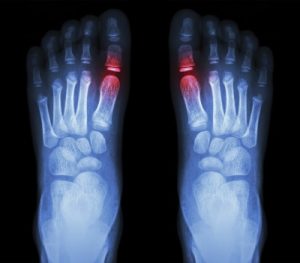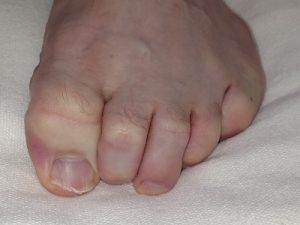What are Hammer Toes?

Women are at a higher risk of developing hammer toe compared to men—this is usually a result of shoe choice. Hammer toes tend to worsen over time, so it’s important to seek medical treatment when they first begin to form. Because of this, hammer toe can become a serious problem—this is especially true for people with diabetes—that could affect your ability to walk.
Types and Causes of Hammer Toe

A hammer toe develops due to an imbalance of the muscles in the toes. This typically causes increased pressure on the tendons and joints in the toe, which when hammer toe develops. While poor shoe choice is typically the main cause of hammer toe, other common causes include:
- Heredity
- Trauma
- Arthritis
- Other foot conditions (such as bunions, flat feet, or high-arches)
Hammer Toe Treatment
Treating hammer toe varies depending on the severity of your condition. To treat mild hammer toe, the physicians at Foot Specialists of Cincinnati can start with conservative methods—such as padding, shoe gear selection/modification, or anti-inflammatory medications. Flexible hammer toe(s) can be alleviated by simply wearing properly fitting shoes.
If the toe has become rigid and is causing too much pain, your physician may choose to surgically address the deformity. Surgery is performed in an attempt to reposition the toe, remove deformed or injured bone, and realign
tendon(s) and joint(s). Most procedures are performed on an outpatient basis; they may require downtime or time away from work for recovery.
For more information about the treatment of hammer toes in the greater Cincinnati area, please call our offices at 859-341-9900.
